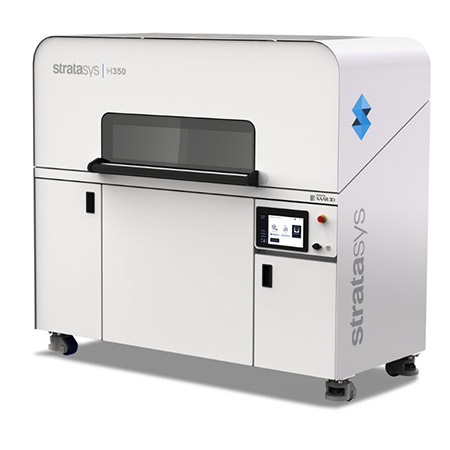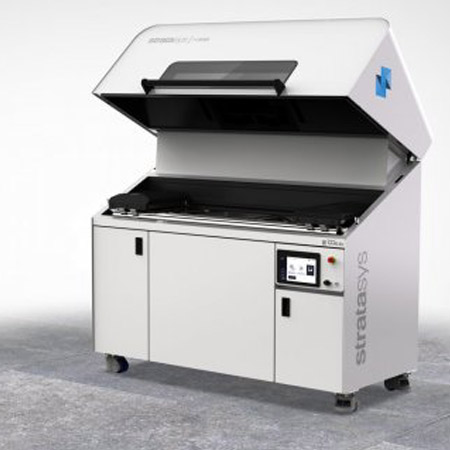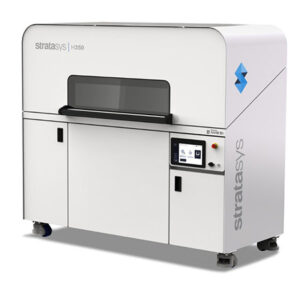The H350 3D printer from Stratasys is that company’s first solution that uses SAF or “Selective Absorption Fusion” technology, developed in 2021. This process announced for the very first time the arrival of the additive manufacturing giant on the powder market, previously Stratasys was associated mainly with FDM and material jetting. As a reminder, SAF technology uses polymer powders and a fluid with high energy absorption. In concrete terms, a roller disperses a layer of powder on the plate. Then, the different piezoelectric printing heads deposit the fluid according to the areas to be fused. Finally, an infrared lamp passes over the plate: the fluid will absorb the energy, fusing the polymer powder according to the 3D model.
Features of the H350 3D Printer
If we look at the machine in question, it has a print volume of 315 x 208 x 293, a layer thickness of 100 microns minimum and 11.62 hours are required to completely finish fabrication. The H350 3D printer has been designed for production needs, whether for small or large series. It incorporates a unique thermal management system called Big Wave to deposit the powder in a repeatable and homogeneous way.
On the software side, GrabCAD Print is installed directly on the H350 printer, allowing you to prepare all your CAD files, prepare your print jobs but also to calculate your costs or monitor the status of the machine. It is an intuitive and easy to use software solution. The H350 is also compatible with Materialise Magics, Siemens NX and PTC from Creo.
Materials & Applications
In terms of currently compatible materials, Stratasys has developed a polyamide PA11 powder, High Yield PA11. It is a material that offers good impact resistance as well as high ductility. PA11 is made from castor oil, which makes it a more environmentally friendly material. Finally, Stratasys claims that its H350 machine will meet all industrial requirements, across all sectors.



